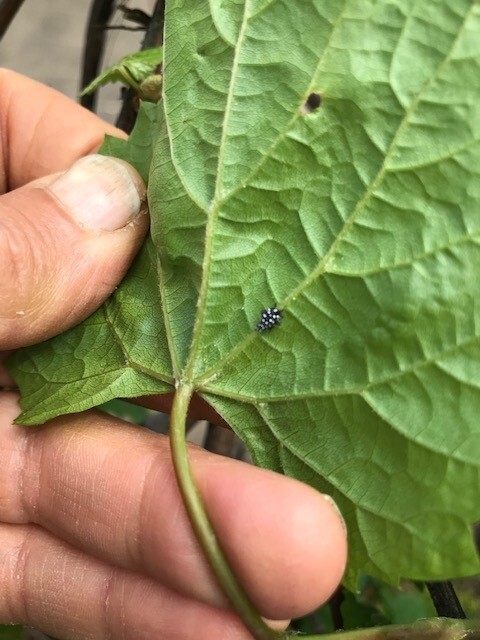GENEVA, Ohio — It’s been nearly four years since we first warned you about them, and one year later, the spotted lanternfly was spotted here in Ohio. The bug's a danger to many plants and fruit crops. So, we went out to our local wineries to see what they were doing to get a jump in the fight against the pests.
Since then, they've spread across our state; we've even found a few right here in the News 5 parking lot. We’re following through to see what local wineries are doing now that the battle against the spotted lanternfly is intensifying.

We don’t just report the initial story—we follow through to its conclusion. Read and watch our previous reporting on this story below and see more stories that we've followed through on here.
The owner of M Cellars in Geneva, Matt Meineke, is getting ready to harvest the fruits of his labor tomorrow.
“It's been an odd, weird year,” Meineke said. “It's been a lot of rain early in the season, and right now, it's really dried out, and it's going to afford us a really nice harvest.”
Aside from the curve ball of heavy rain this summer, another threat that keeps growing in severity and population size, it’s the red-spotted lanternfly.
“We really don't need anymore challenges doing this, but who knows, we'll take it as it comes,” Meineke added.
Native to China, the red-spotted lanternfly arrived in the U.S. in egg masses on a stone shipment. The first infestation was found in Pennsylvania and has now spread all over the country. Case Western Reserve University Biologist Mark Willis said it's concerning because they're capable of destroying acres worth of crops, and their population keeps growing year after year.
“They are, in some sense, out of control,” Willis said. “There's no natural biological agent, there's no predators, there's no parasites, there's no nothing. So, these things can reproduce, out of control, like literally out of control."
Red-spotted lanternflies are best known for feasting on grape vines, apple, walnut and hardwood trees, but they aren't picky.
“The big problem for us is they seem to have a very broad range of plant species they are willing to eat,” Willis added.
It’s not the actual fruit part of a plant that is appealing to these flies; it’s the stems. They stick their mouths in and suck out all of the nutrients of the plant, often leaving behind a stick honey-like film.
“They're actually removing the products of photosynthesis that the plant is making for itself to grow and make fruit with,” Willis said. “That's what the spotted lanternfly is using for food. So, the more spotted lantern flies there are has a really significant impact on fruit trees and grapevines.”
Luckily, Meineke hasn't seen any at his vineyard yet, but if he did, it could be detrimental to the business he's spent more than a decade building.
“When they do feed, it's like a double-edged sword,” Meineke said. “This vineyard is the heartbeat to everything we do. Without it, we really don't exist. There's really not much of a point to have the building or anything else you see when you visit.”
Meineke said he's staying vigilant and just bought a new insecticide spray machine last week to intensify prevention efforts, which helps.
“Bigger, better, faster,” Meineke said. “You try to hold off spraying insecticide as long as you can, but you also have to keep the vineyard healthy.”











